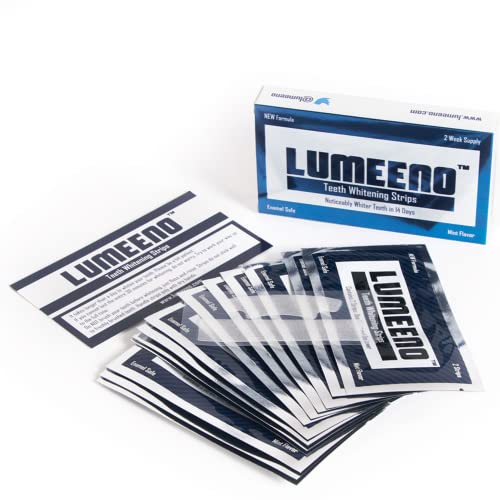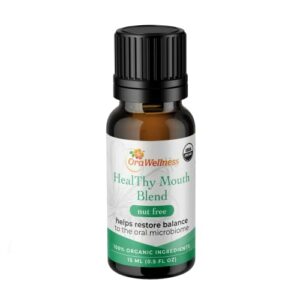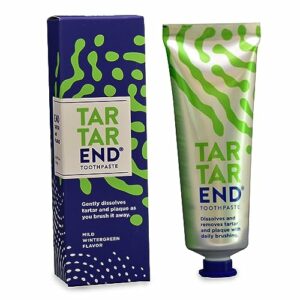In this step-by-step guide, we will explore the world of teeth whitening strips and their effectiveness in brightening your smile. Discover how these strips work and learn how to use them to achieve a whiter and more confident smile.
Achieve a Radiant Smile with These
Choosing the right teeth whitening strips
When choosing the right teeth whitening strips, it is crucial to consider your individual needs and dental health. Selecting the most suitable strips will ensure effective and safe results. Start by assessing the strength of the whitening strips. Different products come in various strengths, ranging from mild to intense. If you have sensitive teeth or gums, opt for a gentler formula to avoid any discomfort or irritation.
Additionally, carefully examine the ingredients used in the whitening strips. Look for products that are free from harmful chemicals such as peroxide or chlorine dioxide, as these can potentially damage your teeth and gums. Instead, choose strips that contain enamel-safe ingredients, like hydrogen peroxide or carbamide peroxide, which effectively whiten teeth without causing harm.
Consider your sensitivity level when selecting teeth whitening strips. Some products are specifically designed for individuals with sensitive teeth, utilizing milder ingredients and lower concentrations. These strips can help minimize any discomfort or sensitivity during and after the whitening process.
Remember, everyone’s dental health and needs vary, so it is essential to consult with your dentist before using any teeth whitening strips. They will be able to provide personalized recommendations based on your specific circumstances. By selecting teeth whitening strips that are suitable for your needs and dental health, you can achieve a brighter smile while maintaining the overall health of your teeth and gums.
Preparing your teeth
To properly clean and dry your teeth before applying the whitening strips, follow these simple steps. First, brush your teeth thoroughly with a soft-bristled toothbrush and fluoride toothpaste. Gently move the brush in circular motions, ensuring that all surfaces of your teeth are cleaned. Pay special attention to the areas where your teeth meet your gums and any hard-to-reach spots.
Next, floss your teeth to remove any food particles or plaque between your teeth. Take a piece of floss and slide it between each tooth, moving it up and down to dislodge any debris. Be gentle to avoid damaging your gums. You can also use interdental brushes or water flossers for a more thorough clean.
After brushing and flossing, rinse your mouth with water to remove any remaining toothpaste or debris. Take a sip of water, swish it around your mouth for a few seconds, then spit it out. Repeat this a couple of times to ensure your teeth are clean and ready for the whitening strips.
Once your teeth are clean, it’s important to dry them before applying the whitening strips. Use a clean tissue or towel to gently pat your teeth dry. This will remove any moisture and ensure better adhesion of the whitening strips.
Remember, removing any food particles or plaque is crucial for the effectiveness of the whitening process. By following these steps and maintaining good oral hygiene, you can achieve optimal results when using whitening strips.
Applying the strips
To apply the teeth whitening strips correctly, follow these detailed instructions for a successful process. First, ensure that your teeth are clean and dry before starting. Take one strip from the packet and carefully remove the backing. It’s important to handle the strips with dry hands to maintain their effectiveness.
Next, align the strip with your gum line, placing the gel side directly onto your teeth. Gently press the strip into place, ensuring it conforms to the shape of your teeth. Smooth out any wrinkles or air bubbles to ensure full contact with the surface.
Once the strip is in place, leave it on for the recommended duration stated on the packaging. This is usually around 30 minutes, but it may vary depending on the brand. During this time, it’s important to avoid eating, drinking, or smoking to prevent any interference with the whitening process.
After the designated time has passed, carefully remove the strip from your teeth. Dispose of it properly and rinse your mouth thoroughly with water to remove any residual gel. It’s important to note that some people may experience temporary tooth sensitivity after using the strips, but this should subside within a few days.
Remember, consistency is key when using teeth whitening strips. Follow the instructions provided and stick to the recommended usage frequency to achieve the desired results. If you have any concerns or questions, it is always best to consult with your dentist.
Wearing the strips
To ensure the best results and minimize potential side effects, we recommend following these guidelines when wearing whitening strips. Firstly, it’s important to check the instructions provided with your whitening strips, as each brand may have different recommendations. Typically, whitening strips are worn for a duration of 30 minutes to 1 hour per session. This allows the whitening gel on the strips to effectively work on your teeth, helping to remove stains and brighten your smile.
However, it is common to experience tooth sensitivity during or after using whitening strips. If you encounter any discomfort, there are a few ways to alleviate it. One helpful tip is to reduce the frequency of whitening sessions, spacing them out to give your teeth time to recover. Another option is to use a toothpaste specially formulated for sensitive teeth before and after each whitening session. This can help to soothe any sensitivity and protect your enamel.
Additionally, some individuals find it helpful to apply a desensitizing gel or fluoride rinse after using whitening strips. These products can provide extra protection for your teeth and minimize sensitivity. Remember to always follow the instructions provided with the desensitizing gel or fluoride rinse for best results.
For example, if you experience tooth sensitivity during your whitening journey, try reducing the number of sessions per week from three to two. Use a toothpaste for sensitive teeth, such as Sensodyne, before and after each session. Apply a desensitizing gel, like Colgate Sensitive Pro-Relief, to your teeth for additional relief. By following these steps, you can continue your whitening journey with greater comfort and confidence.
Remember, everyone’s teeth are different, so it’s important to listen to your body and adjust accordingly. If you have any concerns or prolonged sensitivity, we recommend consulting with a dental professional who can provide personalized advice and guidance.
Removing the strips
To remove the teeth whitening strips after the recommended time, follow these proper techniques for a gentle removal that prevents any damage to your teeth. Firstly, using clean hands, gently grip the edges of the strip and slowly peel it away from your teeth. It’s important to avoid any sudden or forceful movements, as this can potentially cause sensitivity or even damage to your enamel.
As you peel the strip off, be sure to move in a consistent, controlled motion to ensure its complete removal. If you encounter any resistance or find the strip sticking to your teeth, pause for a moment and apply a small amount of water to the area. This will help loosen the strip and make it easier to remove without causing any harm.
Remember, it’s crucial to be patient and gentle throughout the removal process. Rushing or forcefully pulling the strip off can lead to discomfort and potential tooth sensitivity. By taking your time and following these steps, you can safely remove the teeth whitening strips without causing any damage to your teeth.
Rinsing and cleaning
To rinse your mouth thoroughly after removing the strips, begin by filling a cup or glass with warm water. Take a mouthful of water and swish it around in your mouth for about 30 seconds, making sure to reach all areas, including your gums and teeth. Then, spit out the water into the sink. Repeat this swishing and spitting process with fresh water a few more times to ensure a thorough rinse.
After rinsing, it is important to clean the strips before storing them for future use. Gently remove any residue or gel from the strips by using a soft toothbrush or your fingers. Be careful not to use any abrasive materials that could damage the strips. Once the strips are clean, allow them to air dry completely before storing them in a cool, dry place. It is best to keep them in their original packaging or a clean, airtight container to protect them from moisture and other contaminants.
By following these simple steps, you can ensure that your mouth is thoroughly rinsed after removing the strips and that the strips themselves are properly cleaned and stored for future use.
Maintaining long-term results
To maintain the whitening effects of the strips and enjoy long-term results, we have compiled a few tips for you to follow. By avoiding certain foods and drinks that stain teeth and practicing good oral hygiene, you can ensure that your smile remains bright and radiant. Here’s what you need to do:
- Avoid staining foods and drinks: Limit your consumption of highly pigmented foods and drinks such as coffee, tea, red wine, berries, and tomato-based sauces. If you do indulge, try to rinse your mouth with water afterwards to minimize the staining effects.
- Practice good oral hygiene: Brush your teeth at least twice a day with a whitening toothpaste that contains fluoride. This will help to remove surface stains and prevent new ones from forming. Don’t forget to floss daily to remove plaque and debris from between your teeth.
- Use a straw: When enjoying beverages that can stain teeth, such as soda or fruit juices, try using a straw to minimize contact with your teeth.
- Quit smoking: Smoking not only stains teeth but also affects your overall oral health. Quitting smoking will not only help maintain the whitening effects but also enhance your overall well-being.
By following these simple tips, you can prolong the whitening effects of the strips and enjoy a beautiful, bright smile for a long time. Remember, consistency is key, so make these practices a part of your daily routine.
Achieving a Brighter Smile
In conclusion, we have explored the fascinating world of teeth whitening strips and how they work to brighten our smiles. By understanding the active ingredients, such as hydrogen peroxide, we can appreciate the science behind their effectiveness. We have also learned about the benefits of using teeth whitening strips, including their convenience and affordability compared to other whitening options. However, it is essential to follow the instructions carefully to ensure safe and optimal results. By incorporating teeth whitening strips into our oral care routine, we can confidently embrace a whiter smile and boost our self-confidence. Remember, a radiant smile awaits – let’s go ahead and shine!



























